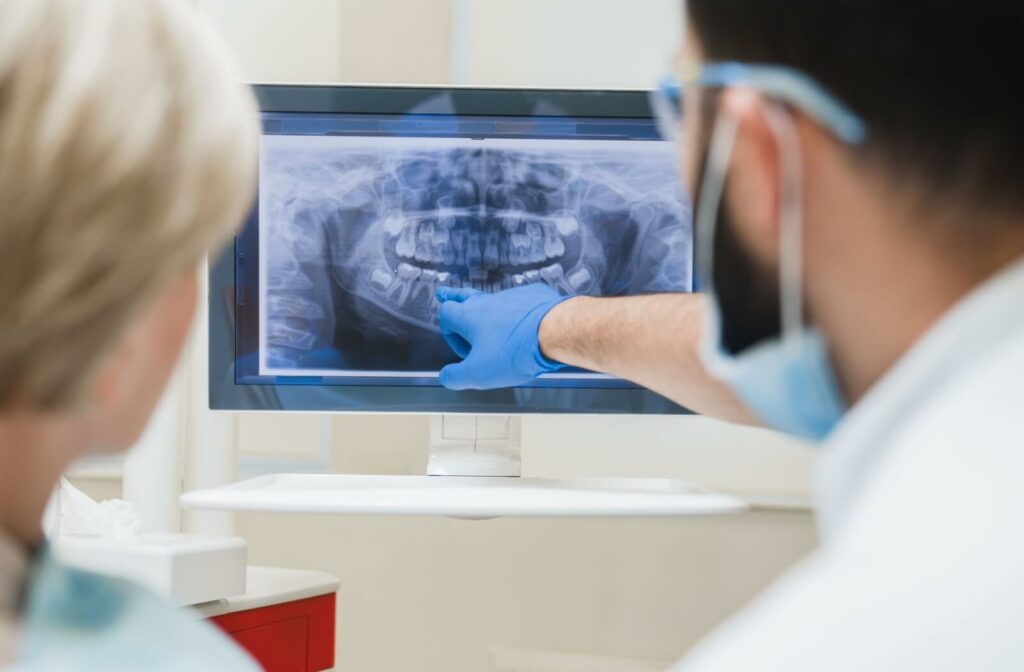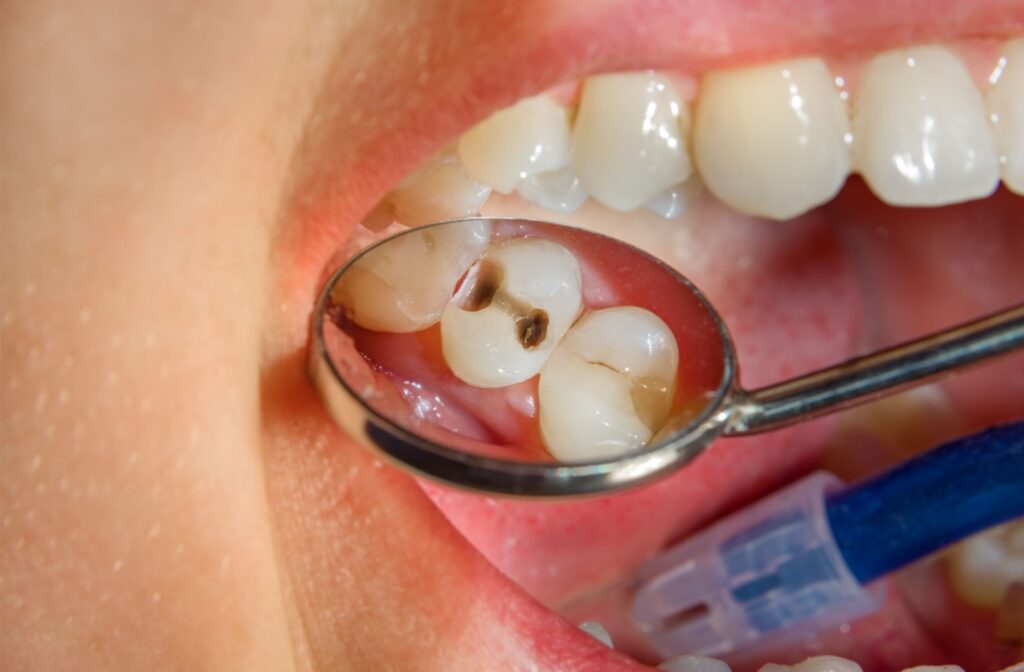Although tooth decay is a common dental concern, it often goes unnoticed in its early stages.
Cavities can start as small, barely noticeable spots before progressing to severe damage without timely treatment. Recognizing tooth decay’s early signs can help prevent pain, infection, and costly dental treatment down the line.
Together, we will discuss the stages of tooth decay, what it looks like, and what you can do to prevent it.
Early Signs of Tooth Decay
Tooth decay does not happen overnight. It begins gradually, and early signs are often subtle. Here is what to watch for in its initial stages:
White Spots on Teeth
One of the earliest visual signs of tooth decay is the formation of white spots on the enamel. Without healthy enamel, teeth become more vulnerable to decay and cavities.
These spots develop from demineralization, which strips minerals, such as calcium and phosphate, from the tooth’s enamel. This occurs when acids from plaque and bacteria interact with sugars from food and drink, creating an environment that gradually weakens the enamel.
They might initially seem harmless, but these spots are a precursor to cavity formation.
Sensitivity to Hot, Cold, or Sweet Foods
Noticing white spots might be slightly challenging, depending on the cavity’s location, but tooth sensitivity is an early symptom that you can feel.
You may notice discomfort when consuming hot beverages, cold treats, or sugary snacks. This sensitivity develops from a thinning enamel, which exposes the softer underlying dentin.
Visible Cavity Formation
When tooth decay progresses past the early stages, it becomes more visible.
Brown, Black, or Gray Spots
At this stage, you may notice discolouration on your teeth which brushing, flossing, or even teeth whitening treatments cannot remove.
These spots range from light brown to black or gray. They are a sign that the decay has started to penetrate deeper into the enamel.
To the untrained eye, the discolouration on these spots can be easily mistaken for stains from food and drink, so it’s worthwhile to have your dentist examine them.
Small Holes or Pits in the Enamel
As decay worsens, visible cavities become more noticeable.
Tiny holes or pits may form on the tooth’s surface, particularly on molar grooves where food particles tend to collect. These cavities may still be painless, but they signal an urgent need for treatment to preserve the health of your tooth.
Advanced Tooth Decay Symptoms
Delaying tooth decay treatment can significantly damage the tooth and its surrounding areas.
Here are some common signs of severe decay:
Deep Cavities & Visible Damage
Advanced decay results in larger, more pronounced cavities that can compromise the tooth’s structural integrity.
You may also notice severe chipping or crumbling along the edges of the affected tooth.
Pain, Swelling, & Bad Breath
By this stage, decay often reaches the tooth’s inner layers, including the dentin and pulp, which can also lead to:
- Persistent toothache or throbbing pain.
- Gum swelling around the affected area.
- Chronic bad breath (halitosis) from bacterial buildup and infection.
Delaying expert care can lead to further complications, such as abscesses or tooth loss.

How to Prevent Tooth Decay
Fortunately, tooth decay is preventable with proper care and consistent habits. Here are some key strategies:
Brush & Floss Regularly
Since tooth decay can develop from leftover food debris and plaque, brushing your teeth twice daily (in the morning and night) can help remove these particles.
Flossing, ideally once a day, goes a step further.
The bristles of your toothbrush cannot thoroughly remove particles between teeth and close to the gum line. Flossing can easily target these hard-to-reach areas.
Schedule Regular Dental Cleanings
Routine dental cleanings and exams are your first line of defense. A professional cleaning and exam every 6 months helps remove plaque and tartar buildup that even the most diligent home care routines might miss.
Additionally, fluoride treatments offered during these visits can strengthen your enamel and reduce the risk of cavities.
Have Routine Dental Exams
A dental exam generally follows a professional cleaning. During this visit, your dentist will thoroughly evaluate your teeth, gums, and overall oral health.
Treatment Options for Tooth Decay
If your dentist does identify tooth decay during your exam, they can treat this concern through several methods, depending on its severity:
- Fillings: For a cavity in its early stage, dentists typically use fillings. This process removes the decayed portion of the tooth before restoring it with composite resin, which blends seamlessly with the natural tooth.
- Crowns: If the tooth is significantly weak from decay, a crown might be necessary. A crown is custom-made to fit over the tooth and provides long-lasting durability to protect and restore the tooth’s function.
- Root canals: If the decay is severe and affects the tooth’s pulp, you might need a root canal. This treatment removes the infected tissue to save the tooth, which is then sealed by placing a crown over it for added protection.
When a Tooth Extraction is Necessary
When the damage to the tooth is too severe, and saving it is no longer an option, extracting the tooth might be necessary.
It might seem daunting, but it is generally a last resort. Removing the tooth helps prevent the infection from spreading to other teeth or gums, saving you time, money, and unnecessary discomfort down the line.
Following an extraction, your dentist may recommend dental implants or bridges to fill the gap.
Expert Help is Just a Step Away
Tooth decay does not have to compromise your beautiful smile. You can keep your teeth strong and healthy by recognizing early signs of decay, taking preventative measures, and seeking timely care. Connect with our Kensington Dental Care team to schedule your routine exam and cleaning.










